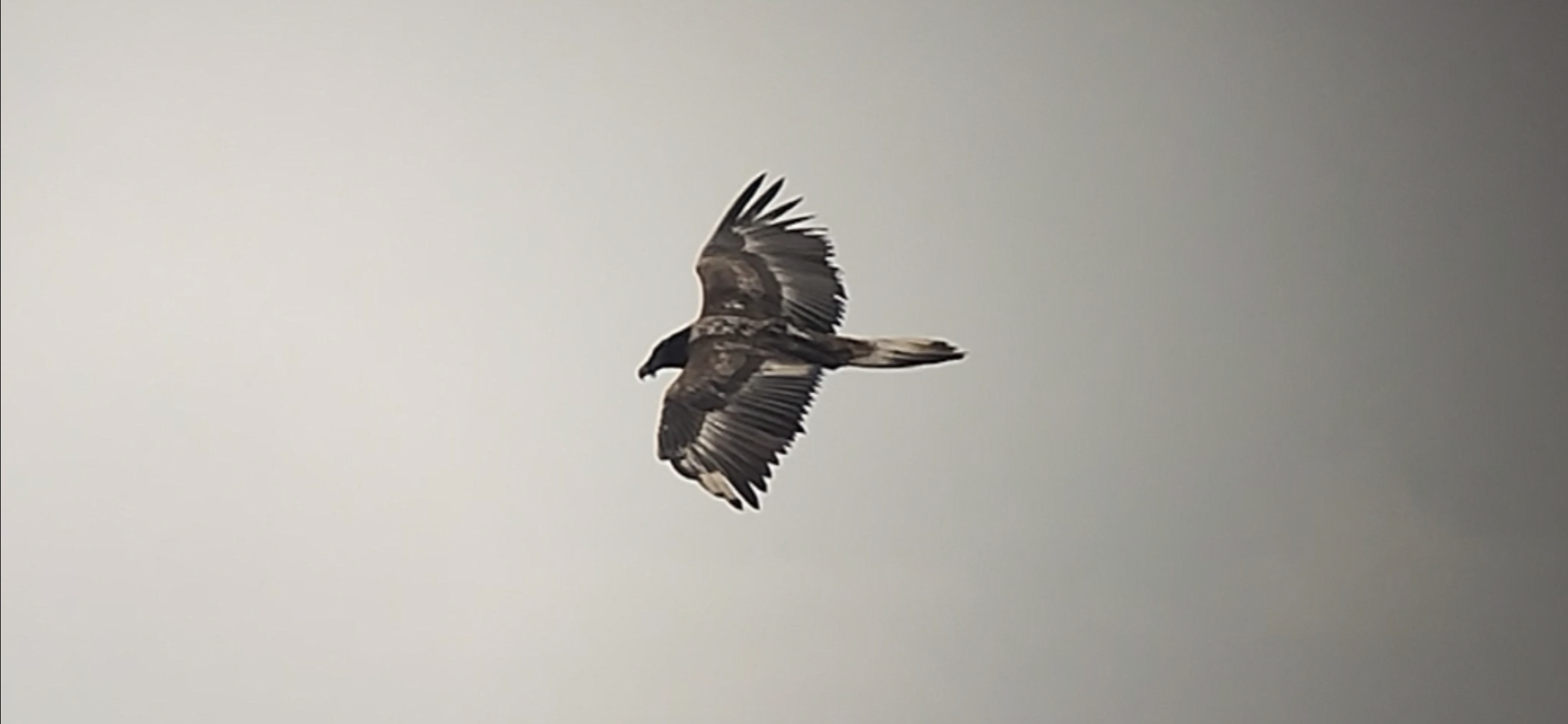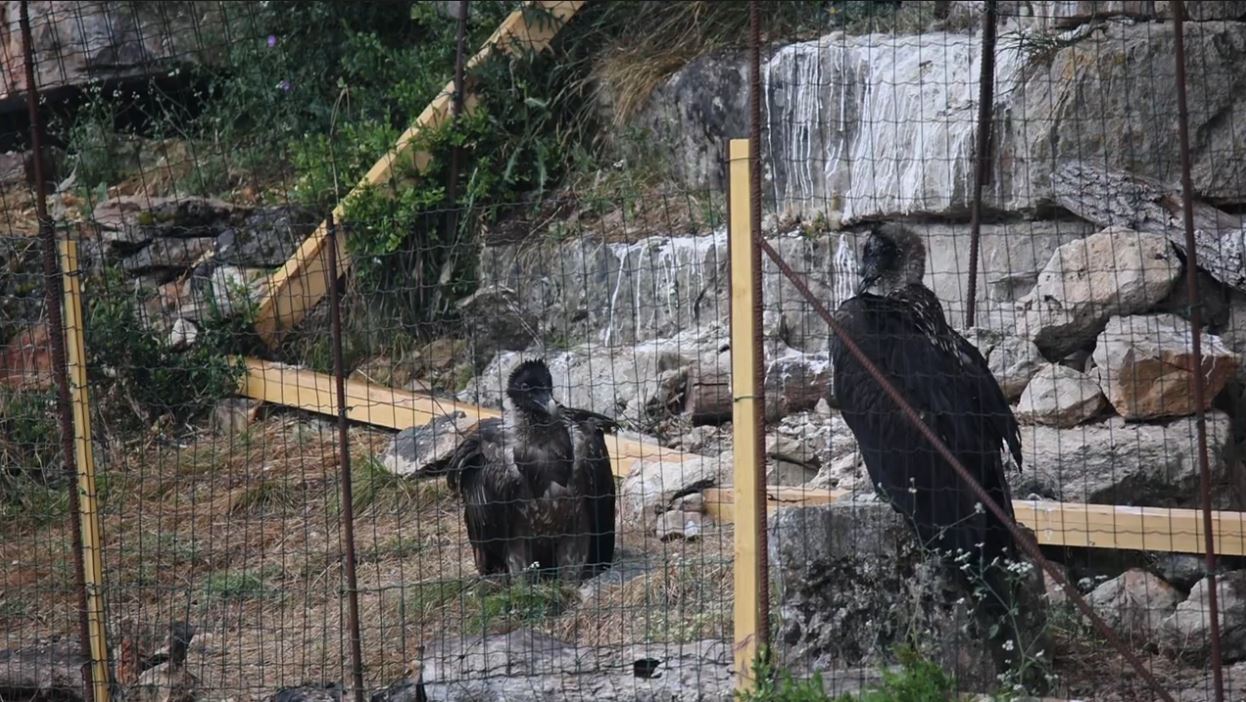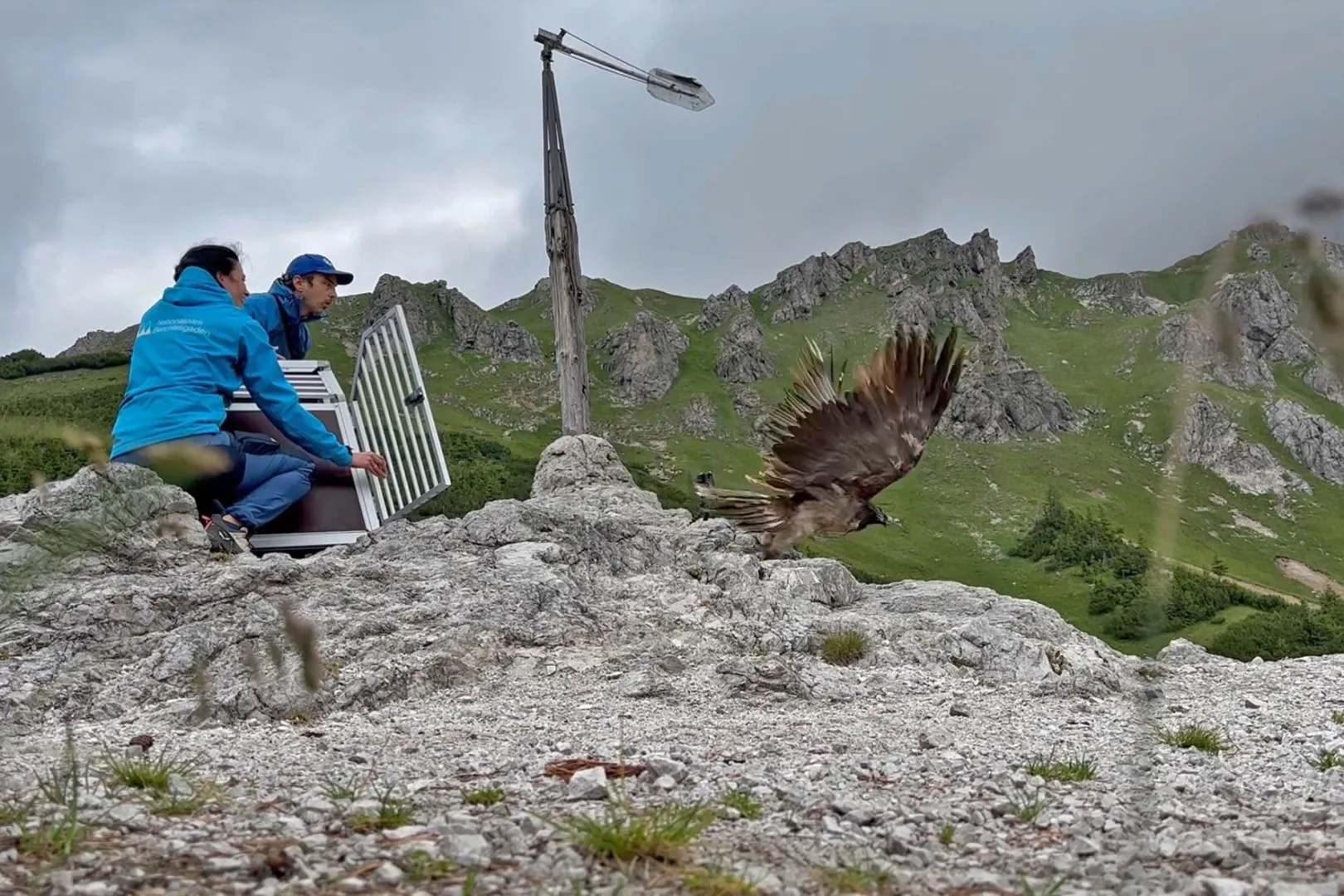Tono and Blimunda were undoubtedly the starts of the 2015 bearded vulture breeding season when they have successfully reared a young – named Esperanza, the first ever bearded vulture born in the wild in Andalusia after extinction there in the mid-80s. That they did that in their first real breeding attempt was amazing – more son because Blimunda was only 5 years old, a very precocial age for breeding. They have paired up in 2013, and started to build a nest in December 2014
Now, after taking it easy last year, the pair has started breeding again, and have laid an egg, which is being closely monitored by the staff of the Junta de Andalucía, who manage the reintroduction project there. The happy moment was also captured on camera by Dr. Francisco Javier Montoro García, a dedicated bearded vulture enthusiast that has been monitoring and filming the pairs in Cazorla, and who filmed the scenes above, documenting the territorial behavior and the laying of the egg-
A total of 44 individuals have now been released into the Sierras de Cazorla, Segura and Las Villas and Sierra de Castril since 2006. Of these 21 individuals are still alive and their tags emitting signals. 13 birds are confirmed dead, while with 10 others their fate is unknown – their tags stopped working although for some there are recent observations.
All the bearded vultures released come from the bearded vulture captive breeding network (EEP), managed by the VCF, and which has a specialized captive breeding centre in Cazorla, managed by the local Fundación Gypaetus and the Junta de Andalusia.
The historical range of the Bearded Vulture comprised almost all the mountains of Eurasia and North Africa. In Andalusia, it was a very common bird until the end of the XIX century. The last documented reproduction occurred in 1983. The last bearded vulture ceased to be seen in Cazorla at the end of 1986.



